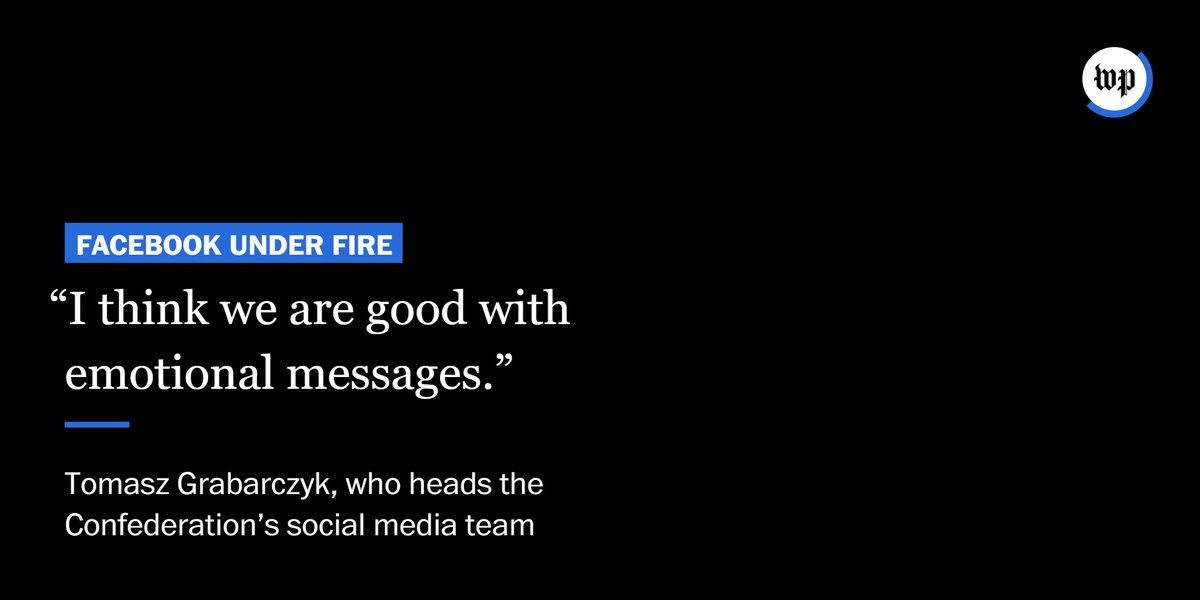
While the public may have been surprised by what happened on Jan. 6, the makings of the insurrection had been spotted at every level, from one side of the country to the other.
The red flags were everywhere. wapo.st/3pTXK0M
The red flags were everywhere. wapo.st/3pTXK0M
Intelligence officials never envisioned a mass attack against the government incited by a sitting president.
Yet Trump was the driving force at every turn as he orchestrated what would become an attempted political coup leading up to Jan. 6. wapo.st/3mvC3lN

Yet Trump was the driving force at every turn as he orchestrated what would become an attempted political coup leading up to Jan. 6. wapo.st/3mvC3lN


Again and again, top government officials received warnings but did not act.
The FBI largely regarded social media posts about Jan. 6 — even those discussing bringing firearms, arresting lawmakers and shooting police — as protected First Amendment speech. wapo.st/3mvC3lN
The FBI largely regarded social media posts about Jan. 6 — even those discussing bringing firearms, arresting lawmakers and shooting police — as protected First Amendment speech. wapo.st/3mvC3lN
On Jan. 6, danger signs were in full view, including clashes that morning among pro-Trump demonstrators and police at the Washington Monument and Lincoln Memorial.
The red flags did not trigger increased security, underscoring how unprepared police were. wapo.st/3GDYLQz


The red flags did not trigger increased security, underscoring how unprepared police were. wapo.st/3GDYLQz



While the Capitol was under siege, President Trump stood aside.
For 187 minutes, he resisted entreaties from advisers, allies and lawmakers to intervene and tell his supporters to go home. wapo.st/3GDYLQz
For 187 minutes, he resisted entreaties from advisers, allies and lawmakers to intervene and tell his supporters to go home. wapo.st/3GDYLQz

In the months after Jan 6., Trump's supporters pushed for new investigations of the election and demanded stricter voting laws.
Election officials around the country received hundreds of menacing emails and calls afterwards, a Post investigation found. wapo.st/2ZDO2V8
Election officials around the country received hundreds of menacing emails and calls afterwards, a Post investigation found. wapo.st/2ZDO2V8
False election claims by Trump have become a driving force in the Republican Party.
Nearly a third of the 390 GOP candidates who expressed interest in running for state office this cycle have downplayed the Jan. 6 attack or questioned Biden’s victory. wapo.st/2ZDO2V8
Nearly a third of the 390 GOP candidates who expressed interest in running for state office this cycle have downplayed the Jan. 6 attack or questioned Biden’s victory. wapo.st/2ZDO2V8
This is an investigation of the key events before, during and after the Jan. 6 attack.
It examines law enforcement's failure to address the looming threats, the cost of Trump's inaction on that day and the spread of threats and misinformation afterwards. wapo.st/3pTXK0M
It examines law enforcement's failure to address the looming threats, the cost of Trump's inaction on that day and the spread of threats and misinformation afterwards. wapo.st/3pTXK0M
• • •
Missing some Tweet in this thread? You can try to
force a refresh








